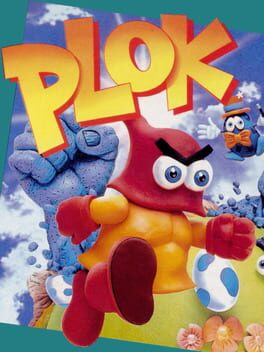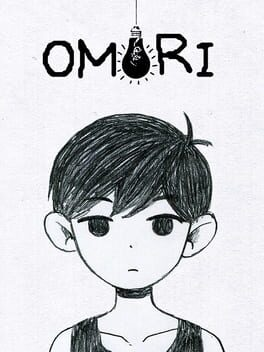Trivia Browser
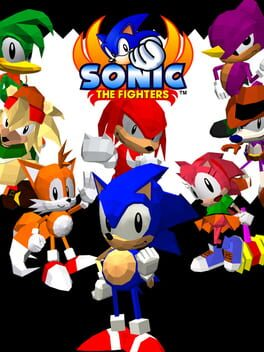
subdirectory_arrow_right Sonic Championship (Game)
▲
1
▼
 All the playable characters were originally intended to have heartstruck expressions where they blush with hearts in their eyes, but only Bean's expression is used in the final game as a rare random object which Amy can drop using the special move "Heads Up!"
All the playable characters were originally intended to have heartstruck expressions where they blush with hearts in their eyes, but only Bean's expression is used in the final game as a rare random object which Amy can drop using the special move "Heads Up!"
The Cutting Room Floor article:
https://tcrf.net/Sonic_Championship#Heartstruck_Expressions
Amy Heads Up! random objects including Bean head:
https://www.youtube.com/watch?v=LbkRG8xKpS8
https://tcrf.net/Sonic_Championship#Heartstruck_Expressions
Amy Heads Up! random objects including Bean head:
https://www.youtube.com/watch?v=LbkRG8xKpS8
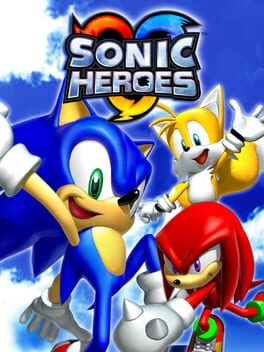
▲
1
▼
According to designer Shiro Maekawa, there were originally going to be six teams with very different line-ups. Two of the teams, Team Sonic and Team Chaotix, had the same members as they appear in the final game, but the four early teams include:
• Amy, Cream and Rouge
• Chaos, E-102 Gamma and Big
• Fang, Bean and Bark
• Metal Sonic, Ray and Mighty
Due to time constraints and balancing purposes, the number of teams was reduced from six to four, and the members of Team Dark and Team Rose were swapped and adjusted after it was decided that Shadow Spoiler:would not be dead after the events of Sonic Adventure 2.
• Amy, Cream and Rouge
• Chaos, E-102 Gamma and Big
• Fang, Bean and Bark
• Metal Sonic, Ray and Mighty
Due to time constraints and balancing purposes, the number of teams was reduced from six to four, and the members of Team Dark and Team Rose were swapped and adjusted after it was decided that Shadow Spoiler:would not be dead after the events of Sonic Adventure 2.
Originally intended teams:
https://twitter.com/mizuhano/status/989669646730067968
Word on Shadow:
https://twitter.com/mizuhano/status/989671387055902720
Electronic Gaming Monthly interview:
https://web.archive.org/web/20040330042803/http://www.egmmag.com/article2/0,2053,1507899,00.asp
https://twitter.com/mizuhano/status/989669646730067968
Word on Shadow:
https://twitter.com/mizuhano/status/989671387055902720
Electronic Gaming Monthly interview:
https://web.archive.org/web/20040330042803/http://www.egmmag.com/article2/0,2053,1507899,00.asp

▲
2
▼
 In a 2002 developer interview archived by the now-defunct blog GSLA, director Yoshiaki Koizumi revealed that the game's staff originally came up with ten different nozzles for FLUDD, devising new ones for each possible situation Mario might encounter. However, this was reduced to three to avoid similarities to the gameplay style of The Legend of Zelda series. Some remnants of this larger quantity can be found in the final game's data, which includes an unused model for a Yoshi head nozzle and parameters for a sniper nozzle. While the former's properties are unknown beyond its appearance (with its model lacking any associated animations), the latter would have been 100 times more powerful than the Squirt Nozzle and would've had a significantly larger hitbox. However, it also would've required Mario to charge it like the Rocket Nozzle and Turbo Nozzle.
In a 2002 developer interview archived by the now-defunct blog GSLA, director Yoshiaki Koizumi revealed that the game's staff originally came up with ten different nozzles for FLUDD, devising new ones for each possible situation Mario might encounter. However, this was reduced to three to avoid similarities to the gameplay style of The Legend of Zelda series. Some remnants of this larger quantity can be found in the final game's data, which includes an unused model for a Yoshi head nozzle and parameters for a sniper nozzle. While the former's properties are unknown beyond its appearance (with its model lacking any associated animations), the latter would have been 100 times more powerful than the Squirt Nozzle and would've had a significantly larger hitbox. However, it also would've required Mario to charge it like the Rocket Nozzle and Turbo Nozzle.
English translation of the interview:
https://shmuplations.com/mariosunshine/
The Cutting Room Floor article:
https://tcrf.net/Super_Mario_Sunshine/Unused_Objects#Unused_Nozzles
https://shmuplations.com/mariosunshine/
The Cutting Room Floor article:
https://tcrf.net/Super_Mario_Sunshine/Unused_Objects#Unused_Nozzles

▲
2
▼
In a 2002 staff interview with Nintendo Dream, director Yoshiaki Koizumi revealed that FLUDD was inspired by his memories of playing with water guns as a kid, an image that he recalled upon first using the analog L & R triggers on the GameCube's controller. Series creator Shigeru Miyamoto further explained that the concept behind FLUDD was controversial among Nintendo's staff due to Mario not being widely associated with these kinds of tools, though Luigi's use of the Poltergust in Luigi's Mansion ultimately served as a precedent in the concept's favor.
In the same interview, Takashi Tezuka stated that Nintendo went to great lengths to keep FLUDD from resembling a firearm, both due to Koizumi finding a water gun "too simple" and due to concerns that guns (or anything that audiences may interpret as such) would be inappropriate for the franchise's public image. The "weird backpack thing" that FLUDD ultimately ended up as addressed both concerns at once, with Koizumi likening it to firefighting equipment and "a [plastic] bottle water rocket toy."
In the same interview, Takashi Tezuka stated that Nintendo went to great lengths to keep FLUDD from resembling a firearm, both due to Koizumi finding a water gun "too simple" and due to concerns that guns (or anything that audiences may interpret as such) would be inappropriate for the franchise's public image. The "weird backpack thing" that FLUDD ultimately ended up as addressed both concerns at once, with Koizumi likening it to firefighting equipment and "a [plastic] bottle water rocket toy."
English translation of the interview:
https://shmuplations.com/mariosunshine/
Time Extension Article:
https://www.timeextension.com/news/2022/09/super-mario-sunshines-fludd-mechanic-was-the-source-of-serious-debate-inside-nintendo
https://shmuplations.com/mariosunshine/
Time Extension Article:
https://www.timeextension.com/news/2022/09/super-mario-sunshines-fludd-mechanic-was-the-source-of-serious-debate-inside-nintendo

▲
1
▼
According to an Electronic Gaming Magazine interview (published in Issue #224, January 2008) with Naughty Dog co-president Evan Wells and the game's director Amy Hennig, they were asked if they ever had plans for a different final boss battle after the interviewer expressed disappointment with it. Wells stated that the boss battle was designed to fit within the confines of the island and world they created, and that they could have made it more elaborate if they had a few extra weeks, but the overall direction remained consistent with their original plan. Hennig added that many games face the issue of jumping-the-shark at the end, as they need to escalate to a climax. She contrasted this with movies, which "get away with less" as they focus more on narrative and emotional experiences, and suggested that game design might benefit from shifting away from traditional boss battles to creating peaks in the overall experience.
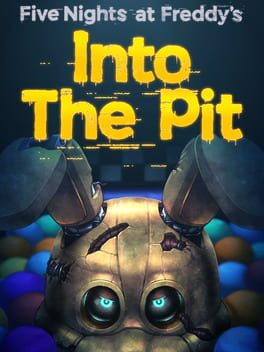
▲
1
▼
Five Nights at Freddy's: Into the Pit was originally going to be a novelty 16-bit SNES-style cartridge game before slowly venturing out into a full-fledged modern PC and console game. Many of the early 16-bit sprites and animations can still be found in the game files.
Scott Cawthon interview:
https://www.youtube.com/watch?v=lrgSbteWMC8#t=2500s
The Cutting Room Floor article:
https://tcrf.net/Five_Nights_at_Freddy's:_Into_The_Pit/Unused_Sprites/SNES_Sprites
https://www.youtube.com/watch?v=lrgSbteWMC8#t=2500s
The Cutting Room Floor article:
https://tcrf.net/Five_Nights_at_Freddy's:_Into_The_Pit/Unused_Sprites/SNES_Sprites
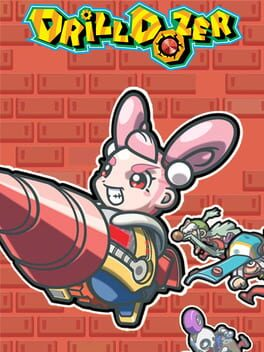
▲
2
▼
Drill Dozer marked the first time Ken Sugimori directed a game since Pulseman eleven years earlier in 1994. In a 2005 Nintendo Dream interview, he revealed that due to the increasing amount of content and collaboration required in making modern games and much of Game Freak's newer staff only having experience in the Pokémon series, he was prompted to place his full trust in the younger staff for most of the gameplay development as he realized he was not as young as he used to be. Sugimori scaled back his efforts to focus on drawing art for the game while character designs were done by Hironobu Yoshida. He also noted that Drill Dozer gave him an opportunity incorporate ten years worth of ideas from previous games that went unused due to memory constraints or deadlines, and felt they succeeded, which gave him a sense of relief.
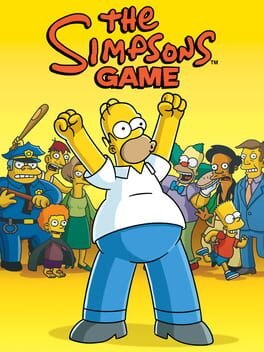
subdirectory_arrow_right The Simpsons Game (Game), The Simpsons Game (Game), The Simpsons Game (Game)
▲
3
▼
The E3 2007 build of the Xbox 360 release revealed that the home console versions were originally meant to have cutscenes fully animated in 3D. A workprint containing these cutscenes shows a mix of finished and unfinished 3D renders and storyboards with placeholder voice acting, with the final game having cutscenes primarily animated in the same 2D digital animation as the show. The Nintendo DS version of the game is the only version that exclusively uses 3D cutscenes.
This build also reveals that the identity of the "sleazy video game producer" featured in Level 5: Mob Rules is Larry Probst, the former CEO of Electronic Arts from 1991-2007 whose name was censored from the script in the final game.
This build also reveals that the identity of the "sleazy video game producer" featured in Level 5: Mob Rules is Larry Probst, the former CEO of Electronic Arts from 1991-2007 whose name was censored from the script in the final game.
The Simpsons Game - Xbox 360 version July 10, 2007 prototype cutscenes (Larry Probst reference at 9:50):
https://www.youtube.com/watch?v=w8P6LMd7gPE#t=590s
The Cutting Room Floor article:
https://tcrf.net/Proto:The_Simpsons_Game_(PlayStation_3,_Xbox_360)/July_10,_2007_(E3)/Early_Videos#Mob_Rules
The Simpsons Game - DS version playthrough:
https://www.youtube.com/watch?v=fY56cCPBygY
https://www.youtube.com/watch?v=w8P6LMd7gPE#t=590s
The Cutting Room Floor article:
https://tcrf.net/Proto:The_Simpsons_Game_(PlayStation_3,_Xbox_360)/July_10,_2007_(E3)/Early_Videos#Mob_Rules
The Simpsons Game - DS version playthrough:
https://www.youtube.com/watch?v=fY56cCPBygY
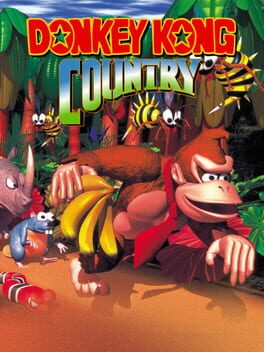
▲
1
▼
 In 2018, Donkey Kong Country designer Gregg Mayles posted a tweet off the heels of King K. Rool's reveal as a playable character in Super Smash Bros. Ultimate featuring a naming sheet from the former game's development dated to March 8, 1994. This document contains several proposed names for various characters and the game itself, with Monkey Mayhem being listed as a working title. Other differences include the following:
In 2018, Donkey Kong Country designer Gregg Mayles posted a tweet off the heels of King K. Rool's reveal as a playable character in Super Smash Bros. Ultimate featuring a naming sheet from the former game's development dated to March 8, 1994. This document contains several proposed names for various characters and the game itself, with Monkey Mayhem being listed as a working title. Other differences include the following:• The names "Blonde Kong" and "Honey Kong" were suggested as alternate names for Candy Kong.
• King K. Rool was originally named "Kommander K. Rool".
• Rock Krock was originally named "Krocrock".
• Slippa was originally going to be called "Mr. Hister". This particular name appeared to be changed late in development, as an unused hint from Cranky Kong mentions Mr. Hister.
• Squidge was originally named "Mr. Squidge".
• Clambo was originally named "Ms. Clamity".
• Cranky Kong and Funky Kong's names were originally spelled "Crankey Kong" and "Funkey Kong".
Additionally, the naming sheet lists several proposed characters absent from the final game:
• An owl Animal Buddy named Hooter. In the replies to his tweet, Mayles stated that Hooter "was going to light the way with its night vision", and that it was eventually replaced by Squawks the parrot.
• A mole Animal Buddy named Miney, likely playing off of the counting rhyme "Eeny, meeny, miny, moe".
• A "Kremling Magician" named Kloak, who would later appear in Donkey Kong Country 2: Diddy's Kong Quest.
• A "Statue Kremling" named Krumble.
• A "Green Kremling" named Klanger.
• A "Robot Kremling" named Krocbot.
• A Moray eel enemy named Mobo.
• A fireball enemy named Fizzle.
• A yeti/"Iceman" enemy named Frozone. In the replies to his tweet, Mayles expressed amusement at "Frozone" also being the name of a character from the 2004 American animated film The Incredibles, stating that "We never used or copyrighted the name, so anyone could have used it." Indeed, "Frozone" is one of several entries on the naming sheet that doesn't have a trademark symbol attached to it. Coincidentally, the Donkey Kong Country television series would feature a yeti character of its own, Eddie the Mean Old Yeti.
• Two fish enemies named Bloop and Gloop; the latter would later appear as an enemy in Donkey Kong Land.
• A "nasty beetle" enemy named Veedub, who would later appear in Donkey Kong Country 2: Diddy's Kong Quest under the name Click-Clack.
Gregg Mayles' original tweet:
https://x.com/Ghoulyboy/status/1027946702270021638
Mayles' confirmation that Squawks replaced Hooter:
https://x.com/Ghoulyboy/status/1028581505566748674
Mayles' remark on the shared name "Frozone":
https://x.com/Ghoulyboy/status/1028884538381004802
The Cutting Room Floor article:
https://tcrf.net/Prerelease:Donkey_Kong_Country_(SNES)#Early_Naming_Sheet
https://x.com/Ghoulyboy/status/1027946702270021638
Mayles' confirmation that Squawks replaced Hooter:
https://x.com/Ghoulyboy/status/1028581505566748674
Mayles' remark on the shared name "Frozone":
https://x.com/Ghoulyboy/status/1028884538381004802
The Cutting Room Floor article:
https://tcrf.net/Prerelease:Donkey_Kong_Country_(SNES)#Early_Naming_Sheet
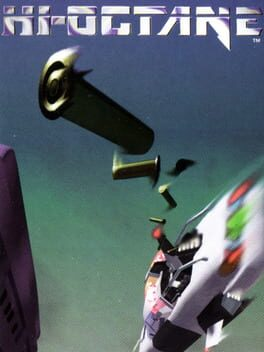
▲
2
▼
According to developer Peter Molyneux in a 2019 interview, the different speed stats for the game's vehicles are entirely for show, and they all drive at the same speed. The lack of different vehicle speeds was due to time constraints stemming from a roughly six and a half week development period, but just seeing supposedly different speed stats when selecting a vehicle seemed to fool critics and players into thinking they were different at the time. Molyneux credits this concession for allowing Bullfrog Productions to focus more time into developing Dungeon Keeper, which would not release until nearly two years after Hi-Octane came out. It's rumored that early builds of Hi-Octane did have different vehicle speeds that were slowly worked on by the development team in their downtime as a side project. Molyneux claimed that this rumor was likely true, but that due to the same time constraints, they could not have made enough progress for the vehicle changes to be implemented into the final game.
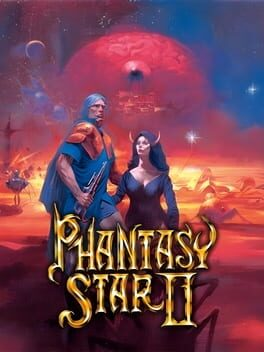
▲
1
▼
 Sometime in 1987-88, Sega and the Japanese magazine "Beep!" held a "Story Recruitment Campaign" to let readers submit ideas to be considered for Phantasy Star II. This contest was held both to set a base for the start of development and to market the game to a wider audience on the name value of Phantasy Star, with the game being heavily advertised in Beep! thereafter. Despite the contest's name, Sega accepted any idea and gave out awards for scenario writing, illustrations, and game mechanics. Out of over 2000 entries, 29 were selected as winners and awarded with individually numbered "Associate Planner" certificates. They were also offered to meet with the game's developers for a planning meeting on March 20, 1988 at Sega's headquarters in Otorii, Tokyo, among other prizes. The events of the planning meeting and the top 7 winners were published in the June 1988 issue of Beep!, including a picture of the full roundtable. Producer/programmer Yuji Naka and artist Rieko Kodama were two of the developers in attendance.
Sometime in 1987-88, Sega and the Japanese magazine "Beep!" held a "Story Recruitment Campaign" to let readers submit ideas to be considered for Phantasy Star II. This contest was held both to set a base for the start of development and to market the game to a wider audience on the name value of Phantasy Star, with the game being heavily advertised in Beep! thereafter. Despite the contest's name, Sega accepted any idea and gave out awards for scenario writing, illustrations, and game mechanics. Out of over 2000 entries, 29 were selected as winners and awarded with individually numbered "Associate Planner" certificates. They were also offered to meet with the game's developers for a planning meeting on March 20, 1988 at Sega's headquarters in Otorii, Tokyo, among other prizes. The events of the planning meeting and the top 7 winners were published in the June 1988 issue of Beep!, including a picture of the full roundtable. Producer/programmer Yuji Naka and artist Rieko Kodama were two of the developers in attendance.Associate Planner No. 001, the Grand Prize winner, was Fumiko Sato. Of the 29 winners, three of them are known to have gone on to work in the video game industry and returned for work at Sega:
• No. 004 was 17-year old Masahiro Sakurai, who won the "Game System Award". Sakurai often recalled the contest without mentioning the game by name, claiming he came up with "something like the action-focused Active Time Battle system seen in JRPGs" before it existed. It's believed that this meeting was what prompted Sakurai to drop out of vocational school to pursue a full-time career in game design, using the award to advance his professional image until he was hired by HAL Laboratory after graduating high school in 1989. Sakurai became known for his work with them and Nintendo, creating the Kirby and Super Smash Bros. series.
• No. 005 was Yukinobu Arikawa, who won the "Game System Special Award" for his entry titled "Those who inherit the legend". While it's not known if he attended the planning meeting, Arikawa would join Sega's AM2 team in 1990 and is still employed at Sega as of 2022. He became known for the comedic touches he adds to the games he works on, having worked as a game designer, writer, localizer and texture artist on different games in the Yakuza: Like a Dragon, Super Monkey Ball, Virtua Fighter, and Daytona USA series.
• No. 011 was middle schooler Keisuke Ōuchi, who described his proposal as being full of "middle school syndrome", but was unable to attend the planning meeting because he lived in the countryside at the time. Ōuchi worked on games as a character designer and graphics artist in various capacities, and created and directed the 1998 visual novel Ojou-sama Express, which similarly to Phantasy Star II held a long-term reader participation contest in the gaming magazine "Dengeki G's Magazine". He also works as a collectors' toy designer under the name Alan Moriguchi, specializing in mechs and robots.
It's unknown if or how any of the winners' ideas were used in the final game, as all of the developers used pseudonyms in the credits and no Associate Planners were credited.
Beep! - screenshots of March 1988 issue (in Japanese; it's believed that this issue is where the full list of winners were first published, but no full scan of the issue is available online):
https://retoge-mag.websa.jp/archives/215
Beep! - June 1988 issue (in Japanese; Page 86 in the magazine):
https://archive.org/details/beep-1988-06/page/86/mode/2up
Beep! - September 1989 issue translated developer interview:
https://shmuplations.com/psiirelease/
Masahiro Sakurai (No. 004) on Creating Games video:
https://www.youtube.com/watch?v=Yk8WsbCQXGc#t=194s
Sakurai translated magazine column on school/early work experience:
https://sourcegaming.info/2015/07/06/school-work-and-specialists-sakurais-famitsu-column-vol-3334/
Sakurai - The Guardian interview:
https://www.theguardian.com/games/2018/aug/08/super-smash-bros-ultimate-masahiro-sakurai-35-years-gaming-history-nintendo
A conversation between gamers and game journalists about the future of computer games, held on August 15, 1989 at Dempa Publications, Inc. (19-year old Sakurai partook in this, and is credited with winning the Game System Award in the Phantasy Star II contest) [published in "CHALLENGE!! Personal Computer AVG & RPG 5 JP Book"] (Pages 341-355 in the book, Sakurai only appears on page 348 and did not participate in the rest of the conversation):
https://retrocdn.net/images/d/d5/CHALLENGE%21%21_Personal_Computer_AVG_%26_RPG_5_JP_Book.pdf
Yukinobu Arikawa (No. 005) career history:
https://segaretro.org/Yukinobu_Arikawa
https://www.mobygames.com/person/69425/yukinobu-arikawa/credits/
Keisuke Ōuchi (No. 011) tweets:
https://x.com/AlanMoriguchi/status/1320302751096553472
https://x.com/AlanMoriguchi/status/1321068321450553347
Alan Moriguchi (Ōuchi) revealing his identity in 2014:
https://x.com/AlanMoriguchi/status/520581151493070849
Ōuchi MobyGames page:
https://www.mobygames.com/person/456584/keisuke-ouchi/
Dengeki G's Magazine - August 1998 issue (Pages 49-61 in the magazine):
https://archive.org/details/dengeki-gs-magazine-013-august-1998/page/48/mode/2up
Japanese Wikipedia article on Ojou-sama Express with magazine citations (including the above issue):
https://ja.wikipedia.org/wiki/お嬢様特急
Sega Associate Planner No. 017 tweet:
https://x.com/suginov/status/1321062605033664513
Sega Associate Planner No. 019 tweet:
https://x.com/unlucky_numbers/status/1539132578120486912
1988 contest materials were reportedly republished in the reprint mook " Beep(ビープ) 復刻版―特別付録 音楽CD2枚組 ":
https://www.amazon.co.jp/Beep-%E5%BE%A9%E5%88%BB%E7%89%88%E2%80%95%E7%89%B9%E5%88%A5%E4%BB%98%E9%8C%B2-%E9%9F%B3%E6%A5%BDCD2%E6%9E%9A%E7%B5%84-Softbank-mook/dp/4797326239
Tweets that served as a starting point for researching this submission:
https://x.com/gosokkyu/status/1585114095329898496
https://x.com/gosokkyu/status/1705220228828045506
https://retoge-mag.websa.jp/archives/215
Beep! - June 1988 issue (in Japanese; Page 86 in the magazine):
https://archive.org/details/beep-1988-06/page/86/mode/2up
Beep! - September 1989 issue translated developer interview:
https://shmuplations.com/psiirelease/
Masahiro Sakurai (No. 004) on Creating Games video:
https://www.youtube.com/watch?v=Yk8WsbCQXGc#t=194s
Sakurai translated magazine column on school/early work experience:
https://sourcegaming.info/2015/07/06/school-work-and-specialists-sakurais-famitsu-column-vol-3334/
Sakurai - The Guardian interview:
https://www.theguardian.com/games/2018/aug/08/super-smash-bros-ultimate-masahiro-sakurai-35-years-gaming-history-nintendo
A conversation between gamers and game journalists about the future of computer games, held on August 15, 1989 at Dempa Publications, Inc. (19-year old Sakurai partook in this, and is credited with winning the Game System Award in the Phantasy Star II contest) [published in "CHALLENGE!! Personal Computer AVG & RPG 5 JP Book"] (Pages 341-355 in the book, Sakurai only appears on page 348 and did not participate in the rest of the conversation):
https://retrocdn.net/images/d/d5/CHALLENGE%21%21_Personal_Computer_AVG_%26_RPG_5_JP_Book.pdf
Yukinobu Arikawa (No. 005) career history:
https://segaretro.org/Yukinobu_Arikawa
https://www.mobygames.com/person/69425/yukinobu-arikawa/credits/
Keisuke Ōuchi (No. 011) tweets:
https://x.com/AlanMoriguchi/status/1320302751096553472
https://x.com/AlanMoriguchi/status/1321068321450553347
Alan Moriguchi (Ōuchi) revealing his identity in 2014:
https://x.com/AlanMoriguchi/status/520581151493070849
Ōuchi MobyGames page:
https://www.mobygames.com/person/456584/keisuke-ouchi/
Dengeki G's Magazine - August 1998 issue (Pages 49-61 in the magazine):
https://archive.org/details/dengeki-gs-magazine-013-august-1998/page/48/mode/2up
Japanese Wikipedia article on Ojou-sama Express with magazine citations (including the above issue):
https://ja.wikipedia.org/wiki/お嬢様特急
Sega Associate Planner No. 017 tweet:
https://x.com/suginov/status/1321062605033664513
Sega Associate Planner No. 019 tweet:
https://x.com/unlucky_numbers/status/1539132578120486912
1988 contest materials were reportedly republished in the reprint mook " Beep(ビープ) 復刻版―特別付録 音楽CD2枚組 ":
https://www.amazon.co.jp/Beep-%E5%BE%A9%E5%88%BB%E7%89%88%E2%80%95%E7%89%B9%E5%88%A5%E4%BB%98%E9%8C%B2-%E9%9F%B3%E6%A5%BDCD2%E6%9E%9A%E7%B5%84-Softbank-mook/dp/4797326239
Tweets that served as a starting point for researching this submission:
https://x.com/gosokkyu/status/1585114095329898496
https://x.com/gosokkyu/status/1705220228828045506
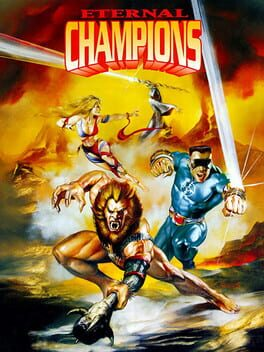
▲
1
▼
In a 2006 interview published by Sega-16, former Sega of America employee Scott Berfield stated that the original idea for Eternal Champions was much more humorous and over the top. Characters would have been parodies of various heroic archetypes, while the training mode would have consisted of minigames where the player beats up dwarves in different ways. The character design would have been inspired by the art of British comic book artist Simon Bisley, and in fact Berfield tried to get Bisley himself to do artwork for the game, but this couldn't be done due to scheduling conflicts. Additionally, the gameplay was also going to be different, being closer to that of Street Fighter II. Berfield left Sega of America sometime after the project was greenlit, and it was passed down to then Sega producer Michael "Mike" Latham who decided to make drastic changes to the idea. Shadow Yamato is the only surviving character from the initial concept.
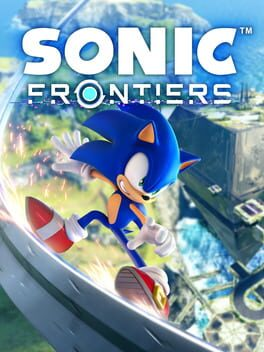
▲
1
▼
Originally, Kronos Island, Rhea Island and Ouranos Island were all connected together into one giant landmass, but according to director Morio Kishimoto, the islands were split in response to feedback from playtesters who thought having one big island was not very interesting.
Thread of tweets in Japanese by the director:
https://twitter.com/moq_46/status/1656642932873789442
https://twitter.com/moq_46/status/1656643052944121856
https://twitter.com/moq_46/status/1656643174918676488
Video showing off beta Kronos Island:
https://www.youtube.com/watch?v=VzuhwAwWCzo
https://twitter.com/moq_46/status/1656642932873789442
https://twitter.com/moq_46/status/1656643052944121856
https://twitter.com/moq_46/status/1656643174918676488
Video showing off beta Kronos Island:
https://www.youtube.com/watch?v=VzuhwAwWCzo
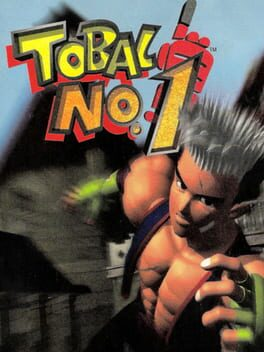
▲
2
▼
According to director Seiichi Ishii, the game was originally planned to feature a roster of characters from Chrono Trigger after he requested to work with that game's lead artist Akira Toriyama. Ishii wanted to work with him because around that time, Trunks from Toriyama's manga series "Dragon Ball Z" had recently been introduced, and he wanted a character like him in the game. As work on the game's prototype progressed, Toriyama was brought on and offered to design a full cast of new characters for the game instead of using Chrono Trigger characters.

subdirectory_arrow_right Dinosaur Planet (Game)
▲
2
▼
 There's a fairly common misconception that the character of Krystal was originally meant to be a cat in Dinosaur Planet, prior to being redesigned as a vixen when the project was transformed into Star Fox Adventures.
There's a fairly common misconception that the character of Krystal was originally meant to be a cat in Dinosaur Planet, prior to being redesigned as a vixen when the project was transformed into Star Fox Adventures.The reality is that despite having a somewhat feline look, Krystal was always intended to be a fox as early as Dinosaur Planet, her original backstory even claiming that she belonged to the "Vixon Tribe" on planet Animus (Sabre and Randorn on the other hand belonged to the "Wolven Tribe", as they were both wolves). Former Rare artist Kevin Bayliss has stated multiple times that she was meant to represent a stylized arctic fox in particular.
Kevin Bayliss revealing Krystal's species as arctic fox on Twitter:
https://x.com/Kev_Bayliss/status/1568570218053500930
https://x.com/Kev_Bayliss/status/1567633642159017990
https://x.com/Kev_Bayliss/status/1786705955918405690
https://x.com/Kev_Bayliss/status/1786643909122146427
Dinosaur Planet story documents:
https://rarethief.com/dinosaur-planet/
https://x.com/Kev_Bayliss/status/1568570218053500930
https://x.com/Kev_Bayliss/status/1567633642159017990
https://x.com/Kev_Bayliss/status/1786705955918405690
https://x.com/Kev_Bayliss/status/1786643909122146427
Dinosaur Planet story documents:
https://rarethief.com/dinosaur-planet/
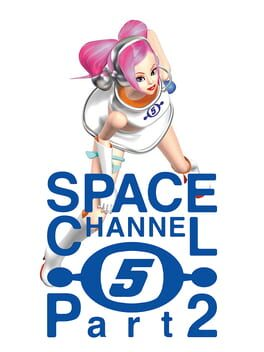
▲
1
▼
Several additional characters were planned to appear in the game, but were scrapped in order to keep the game's plot easier to understand. This includes the presence of a "Space Broadcasting Censorship Bureau", who would interrupt broadcasts that were deemed unsuitable (and whom Pine was originally going to be a member of alongside her backups Sexy 1 and 2, taking issue with Ulala's exposing outfit), a narcissistic reporter from Channel 777 named "Gold Kinpicano", and a different main antagonist tentatively referred to as the "Dark Dancing Demon Lord", whose goal was to invade the entire universe with dance.
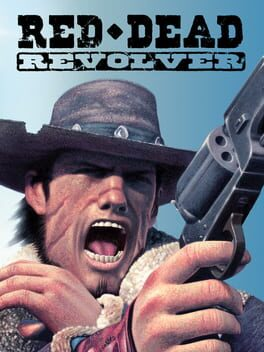
▲
1
▼
Red Dead Revolver originally began development with Capcom in 2000, when developer Rockstar San Diego was still known as Angel Studios. It started as "SWAT", a game with a four-person split-screen feature that allowed you to control four members of a S.W.A.T. team at once. Reportedly, after Capcom producer Yoshiki Okamoto watched the 1971 spaghetti western film "Blindman", the project quickly shifted to a western game, with "SWAT" now standing for "Spaghetti Western Action Title" before being renamed to Red Dead Revolver. After Angel Studios was acquired by Take Two Interactive in 2002 and renamed to Rockstar San Diego, they continued working with Capcom on the project until Capcom decided to cancel the game in 2003 due to a perceived lack of progress. Capcom eventually agreed to let Rockstar Games continue working on Red Dead Revolver the same year in exchange for having exclusive publishing rights in Japan.

▲
2
▼
 There is an unused title screen in the Metal Slug bootleg game Terrifying 9/11 that suggests it was originally going to be released as a straightforward bootleg version of Metal Slug instead of a bad-taste cash-in on the September 11th attacks.
There is an unused title screen in the Metal Slug bootleg game Terrifying 9/11 that suggests it was originally going to be released as a straightforward bootleg version of Metal Slug instead of a bad-taste cash-in on the September 11th attacks.
